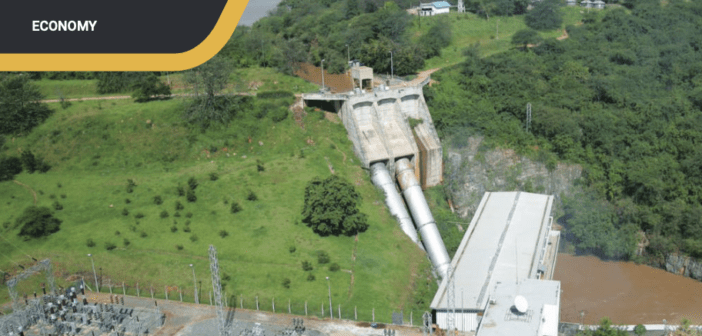By Derek Mutiso
Electricity is the lifeline of any modern economy, powering businesses, homes, and critical infrastructure. According to www.Rockefellerfoundation.org, “Access to power catalyzes economic development in rural areas and creates more jobs and new industries. Children’s interest and performance in school improve. Households have fewer respiratory ailments and accidents. And women feel safer and more mobile, especially at night.”
Our country has made great strides in recent years to increase access to electricity, but many challenges remain. Despite being one of the fastest-growing economies in Africa, Kenya still faces significant energy deficits, with nearly 30% of its population lacking access to reliable electricity.
Lack of access to stable electricity in Kenya has far-reaching consequences for productivity, health, education, and quality of life. Without stable electricity, it is difficult for businesses to operate efficiently, hindering economic growth and job creation. In households, lack of access to electricity means that families have to rely on kerosene lamps or other alternative sources of lighting, which can be expensive, and environmentally unsustainable.
The absence of reliable electricity also impacts education, with students struggling to study and complete homework in poorly lit environments, and health, with hospitals and clinics working hard to provide basic medical care. The main cause for concern in Kenya is the cost, quality and reliability of our electricity supply; with increasingly frequent blackouts and voltage fluctuations impacting businesses and households alike.
Despite these challenges however, Kenya has made significant progress in recent years in increasing access to electricity. According to the World Bank, the percentage of the population with access to electricity in Kenya increased from 27% in 2013 to 75% in 2020, thanks in part to government efforts to expand the national grid and promote off-grid solutions such as solar power. This puts us way ahead of our African counterparts like West Africa for example, which has one of the lowest rates of electricity access in the world, standing at only about 42% of the total population.
To address these challenges, the Kenyan government has in the past launched several initiatives aimed at increasing access to reliable and sustainable electricity. These include the ambitious Last Mile Connectivity Project and the Scaling-Up Renewable Energy Program, which seeks to increase the share of renewable energy in the country’s energy mix. Private sector investment in the energy sector is also increasing, with international companies such as General Electric and Siemens investing in new power plants and transmission infrastructure.
Understanding Kenya’s Energy Landscape
Understanding a country’s energy landscape is crucial to developing a sustainable and reliable electricity system, which is essential for economic growth and prosperity. Access to reliable and affordable energy is critical for several reasons, including;
•Powering industrial and commercial activities.
•Supporting agriculture.
•Improving the quality of life for households.
Kenya has significant potential for renewable energy, including geothermal, wind, and solar power, which can provide a clean and sustainable source of electricity, this is evidenced by its track record as one of the lowest cost developers of geothermal power in the world. By investing in these renewable energy sources and developing a robust energy infrastructure, Kenya can promote economic growth, create jobs, and improve the standard of living for its citizens.
Figure 9.3: Proportion of Electricity by source, 2021

Source: https://www.trade.gov/country-commercial-guides/kenya-energy-electrical-power-systems
More than 80% of the electricity in Kenya is produced through renewable and clean energy sources, with geothermal energy being the most important. It has an estimated potential of 10,000MW, but it is not yet fully utilized. Despite this, Kenya is ranked as the eighth biggest geothermal energy producer globally.
In January 2023, Kenya experienced an all-time high demand for electricity, reaching 2132.29 megawatts. This has created pressure for the country to increase its electricity generation capacity. The heightened demand can be linked to the ongoing economic recovery of businesses following the pandemic-induced downturn. In a press statement, KenGen Chairman Samson Mwathethe stated that, “We have recorded an increase in the demand for electricity in Kenya, which continues to grow, driven by the high business activity as the country recovers from the effects of Covid-19.”
In order to prevent potential power shortages or the adoption of load shedding or power rationing during peak consumption hours, Kenya’s growing demand for electricity necessitates a rise in electricity generation. Some households’ access to electricity could be interrupted in future if supply doesn’t rise to meet demand.
The Energy and Petroleum Regulatory Authority (EPRA) defines peak demand as the highest load on the electricity grid, typically between 8 pm and 8:30 pm in coastal regions and between 7:30 pm and 8 pm in the rest of the country.
During the 2021-22 financial year, peak demand increased by 3.2% to 2056.67 megawatts compared to the previous fiscal year’s 1993.63 megawatts. To meet the growing demand, installed capacity rose to 3074.34 megawatts, an increase from 2972 megawatts. This was due to an increase of 86 megawatts from geothermal sources and 120 megawatts from solar generation. This increase was mainly attributed to the Cedate Solar Power Plant, Selenkei Solar Power Plant, Malindi Solar, and Olkaria 1 Unit 6. Geothermal power accounted for the largest share of installed capacity at 30.87% (949.13 megawatts), followed by hydro at 837.58 megawatts and thermal at 646.32 megawatts.
KenGen, the main power generator, plans to increase output from existing power plants using new technologies. They intend to rehabilitate the oldest geothermal power plant, Olkaria, which was commissioned in 1981, and increase its generation capacity to 63 megawatts. The company also plans to add 305 megawatts of geothermal power projects and increase the capacity of Olkaria 1, additional units 4 and 5, and Olkaria IV by 40 megawatts.
It has an estimated potential of 10,000MW, but it is not yet fully utilized. Despite this, Kenya is ranked as the eighth biggest geothermal energyproducer globally.
Due to increased fuel prices and a weaker currency, the cost of electricity in Kenya has risen by 10%. As a result, the fuel cost charge and foreign exchange rate fluctuation adjustment have been increased, which will result in a higher unit cost of power for consumers.
Additionally, the country’s energy regulator is expected to announce new power tariffs that will further increase prices. The high inflation in the country has negatively impacted businesses, with demand for goods and services declining for the first time in six months.
Opportunities for Development in Kenya’s Electricity Sector
Despite its energy challenges, Kenya is endowed with immense energy potential. All you need is a visit to Naivasha, and you will see this for yourself. The tectonic shifts in this part of the country are producing unbelievable quantities of energy every day. In a BBC interview at the Olkaria geothermal plant, Juliet
Newson, director of the Iceland School of Energy at Reykjavik University said,
“This energy is coming from the Earth – and it’s essentially limitless.” “Kenya has got a really good resource and that’s the Rift Valley. You’ve got this [incredible]heat that’s so near the surface.” In other parts of the world, you’d have to drill several kilometers or more to find equivalent temperatures.
Kenya has a promising potential for wind energy. With an estimated capacity of 3,000MW. Africa’s largest wind power generation plant, the Lake Turkana Wind Power Plant, produces 310MW and is a significant contributor to the grid. In addition, GE Energy is the technology supplier for the DFC-funded Kipeto wind power plant, which generates 100MW and was commissioned in 2021.
However, the 80MW wind project in Meru, developed by KenGen, has been halted due to permit and land rights issues. For future investors, community engagement will be crucial to ensuring community acceptance and ownership. Kenya has been facing challenges in transmitting electricity due to outdated transmission and distribution networks which result in a system loss of around 16%. To combat this issue, the Kenya Electricity Transmission Company (KETRACO) is currently constructing 4,500 kilometers of new power lines, which will not only double the transmission network but also introduce the first high-voltage 400kV and 500kV DC lines in Kenya. Additionally, KETRACO is working on building three major regional interconnectors to connect with Ethiopia, Uganda, and Tanzania. Moreover, KETRACO is planning to further expand and strengthen the grid by adding 4,200 kilometers of new lines.
With high levels of irradiation throughout the year, Kenya has great potential for solar power. In 2021, Kenya added 120MW of solar power to the grid, bringing the total generation to 172MW. Several other solar projects are in various stages of development and expected to be operational this year (2023). The demand for off-grid solar energy is considerable, especially for remote communities that lack existing transmission infrastructure. Plans are also in motion to convert off- grid diesel stations to solar hybrids to reduce power costs.
Impact of Electricity Access on Poverty Reduction
“Inclusive economic growth is the single most effective means of reducing poverty and boosting prosperity. Yet most economic activity is impossible without adequate, reliable and competitively priced modern energy.” This is according to a World Bank report titled: What you need to know about energy and poverty. Most people believe that Kenya’s ability to grow its manufacturing sector is solely dependent on the cost of electricity, which has been criticized for being expensive, especially when compared to other countries such as Egypt, Ethiopia, and South Africa.
The cost of power in these countries is much lower due to their abundant local resources such as coal, hydro, and gas that can be used to generate electricity at low costs. However, tariffs in Kenya are minimally subsidized, which reflects the cost of production and supply and the revenue requirements of the Kenya Power and Lighting Company (KPLC).
While subsidies in electricity have bee used in other countries, they are not sustainable in the long term, as seen in Egypt’s recent struggles to cut back on electricity subsidies. Kenya should aim to build the quality and quantity of electricity supply by increasing the installed grid capacity and improving the quality of supply. This would encourage the expansion of the manufacturing sector. A good business environment and availability of power in quantity and quality are more important for manufacturing than low electricity tariffs.
What is needed to increase manufacturing, and in turn reduce poverty is a combined effort to provide Kenyans with affordable, quality and reliable electricity. To reduce the cost ofelectricity, Kenya should gradually bring in new generation through competitive tendering processes, allowing for greater economy of scale.
George Aluru, Chairperson Electricity Sector Association of Kenya (ESAK) says, “To attract more manufacturing, we will need more power capacity installed on the grid and to improve the quality of the supply.”
There is no doubt that Kenya’s energy landscape has the potential to be a catalyst for economic growth, provided that the right policies and investments are put in place. Reliable and affordable electricity can lead to substantial economic benefits across various industries and benefit all segments of society.
The author is a business writer and a project coordinator, Omeriye [email protected]




